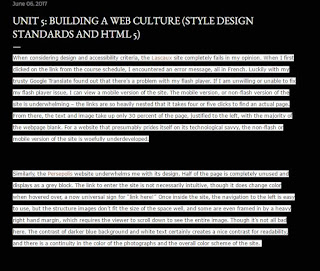Promises and Perils of Digital History: the introduction
The Rosenzweig reading provided a wealth of
information, especially for an introduction, but I found the information very
useful as a framework for the book and for this class. Several points stuck out
to me while reading, first and foremost the "seven qualities of digital
media and networks that potentially allow us to do things better: capacity,
accessibility, flexibility, diversity, manipulability, interactivity, and
hypertextuality (or nonlinearity)."
Of these seven, capacity, accessibility, and interactivity were the most interesting to me. I enjoyed the questions posed in the capacity section -- "why delete anything from the current historical record if it costs so little save it? How might our history writing be different if all historical evidence were available?" There is an overwhelming amount of information on the web today, as well as data stored about our daily moves and actions. What will this information mean to future historians? It seems to me there will be so much white noise in the sheer volume of data to sift through that truly meaningful correlations may be lost.
As someone who spent years sifting through this personal data, using for-profit databases which help organize the information, to find adverse information in just 5-7 business days, I know first hand how overwhelming this data can be. This also brings me to the accessibility quality of digital media. My company pays an exorbitant amount of money to have access to the databases we use to pull criminal and civil litigation, bankruptcy, and adverse media records from around the globe. In a similar way, universities are also forced to pay premiums to have access to scholarly journals. While these materials are accessible, they are only accessible to those willing and able to pay. This of course is only the negative side of accessibility. As Rosensweig mentioned in the book, the internet has also allowed new audiences to access information they would otherwise never see and experience.
The interactivity aspect of digital media is probably the most interesting quality to me. "Because digital media are expressed in a basic language of 1s and 0s, they can take multiple forms, and that means we can arrange those bits into text, images, sounds, and moving pictures." There is such a wide range of shapes and models digital media can take, and I look forward to exploring some of these in our projects this semester. For my final project, I am interested in completing a story map. I find maps very useful in my daily life and travels, and enjoy the ability to combine spatial reality with historical information. I may use some version of Professor Evan's idea about mapping WWI military installations in Virginia.
I find it impressive that several of the local universities have digital humanities centers. When I was completing my bachelor's degree in 2010 I don't believe that was the case, at least as I was aware. Each takes a different approach to website design and information display which shows a wide array of options. I'll have to keep an eye on these sites for upcoming events!

Good focus on those three points. It is interesting that capacity is slowing becoming a problem as digital storage is not exactly cheap when you are talking about the literal mountains of digital data that is being collected and stored, and how important will it be to future historians to have the twitter record of everybody?
ReplyDelete